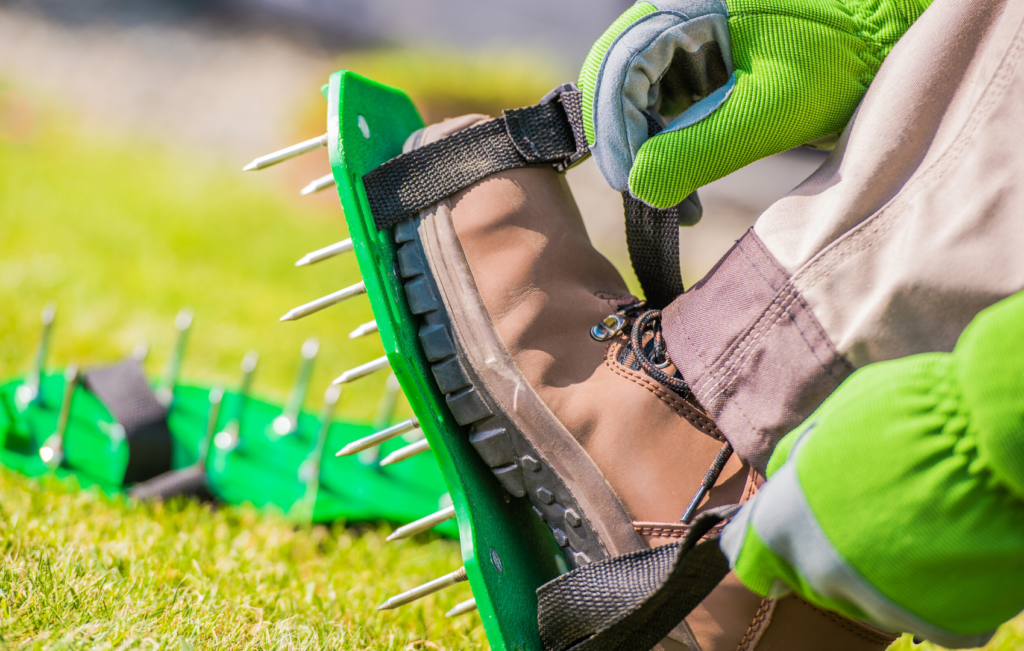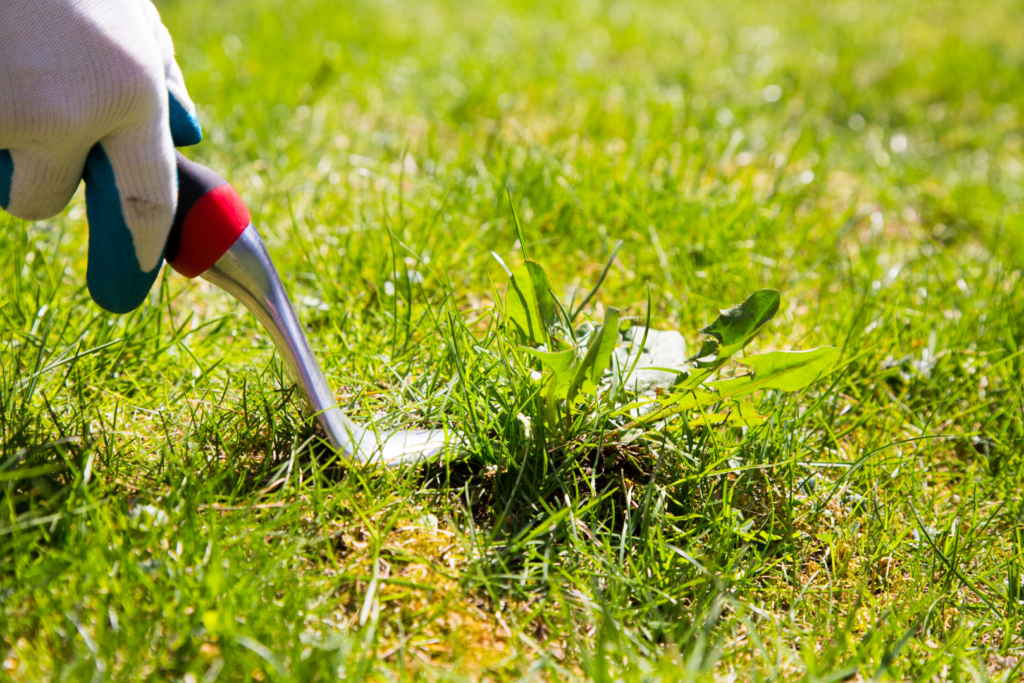
Josh Cornell, Horticulturist, The Gardens on Spring Creek
With the return of warmer temperatures and birdsong filling the air, comes the homeowners’ annual task of preparing their turf areas for the summer ahead. As with anything in life, knowledge and preparation will set you up for success. With that in mind, here are some tips to help your lawn thrive.
Prepare Your Equipment: Your first task should be to maintain your lawn equipment. Our bipolar Rocky Mountain weather gives ample opportunity for some garage work during cold spring storms. Make sure all equipment and tools are clean and ready to work. Oil and fuel motors and ensure that they are leak free. Sharpen mower blades. A good, clean cut is key to the health and appearance of your lawn, whereas a ragged cut increases opportunity for disease.
Clean Up: Rake your lawn to remove any leaves, needles, twigs or other any debris that has collected throughout the fall and winter. Additionally, a good raking can help treat snow mold.
Thatching: Thatch is the buildup of dead plant material between the crown of the grass plant and green blades. If it accumulates more than a half inch, it can be unhealthy for your turf and a harbor for disease and other pests. Removing the thatch layer each spring with a special rake, a thatching machine or thatching blades that can be fitted to your lawnmower. With all these methods, tines rake deep down into the grass and pull up the debris so it can be collected and removed, preventing build up.

Aeration: Lawn aeration consists of either poking holes or pulling plugs out of your lawn to help open the soil structure underneath to more water, air and nutrients. This process also helps decrease the compaction of the soil, leading to longer, healthier roots. Aeration machines can do the job quickly, or you can opt for aeration tools or even spikes that strap to your feet for a more economic option (or exercise).

Weeding and Fertilization: A healthy turf is always the best defense against weeds. That being said, the invasive buggers always seem to find a way in. If you don’t want to use chemicals to control your weeds, good old manual labor is the route to go. Weeding, along with a good maintenance regimen, helps reduce weed pressure.
If pulling weeds is not your style, you can go with a pre-emergent or post-emergent weed and feed fertilizer with herbicide added. Pre-emergent should be put down in early spring before weed seeds have a chance to germinate. One tip is if you see Forsythia blooming, it is too late for a pre-emergent herbicide. After this a regular, post-emergent weed and feed can be used to control the growth of weeds and seedlings already present.
Seeding: If you do have damaged areas or bare spots in your lawn, you will need to over seed or reseed. If an area is sparse, you can spread seed to achieve fuller turf. There are many products and seeds for this purpose; just check to make sure what you select matches the type of turf that you have.
Mowing: When mowing, remember to mow in alternating patterns to avoid ruts, and never cut more than one third of the existing height of the grass.
Follow these steps and you will have the foundation to enjoy your own verdant paradise all summer long.
Support Northern Colorado Journalism
Show your support for North Forty News by helping us produce more content. It's a kind and simple gesture that will help us continue to bring more content to you.
BONUS - Donors get a link in their receipt to sign up for our once-per-week instant text messaging alert. Get your e-copy of North Forty News the moment it is released!
Click to Donate
